Trompe-l'œil is the age-old design trick making a comeback – here's how designers use the whimsical technique
Trompe-l'œil is making a comeback. Be inspired to use this 'trick of the eye' device to bring a new dimension to interiors
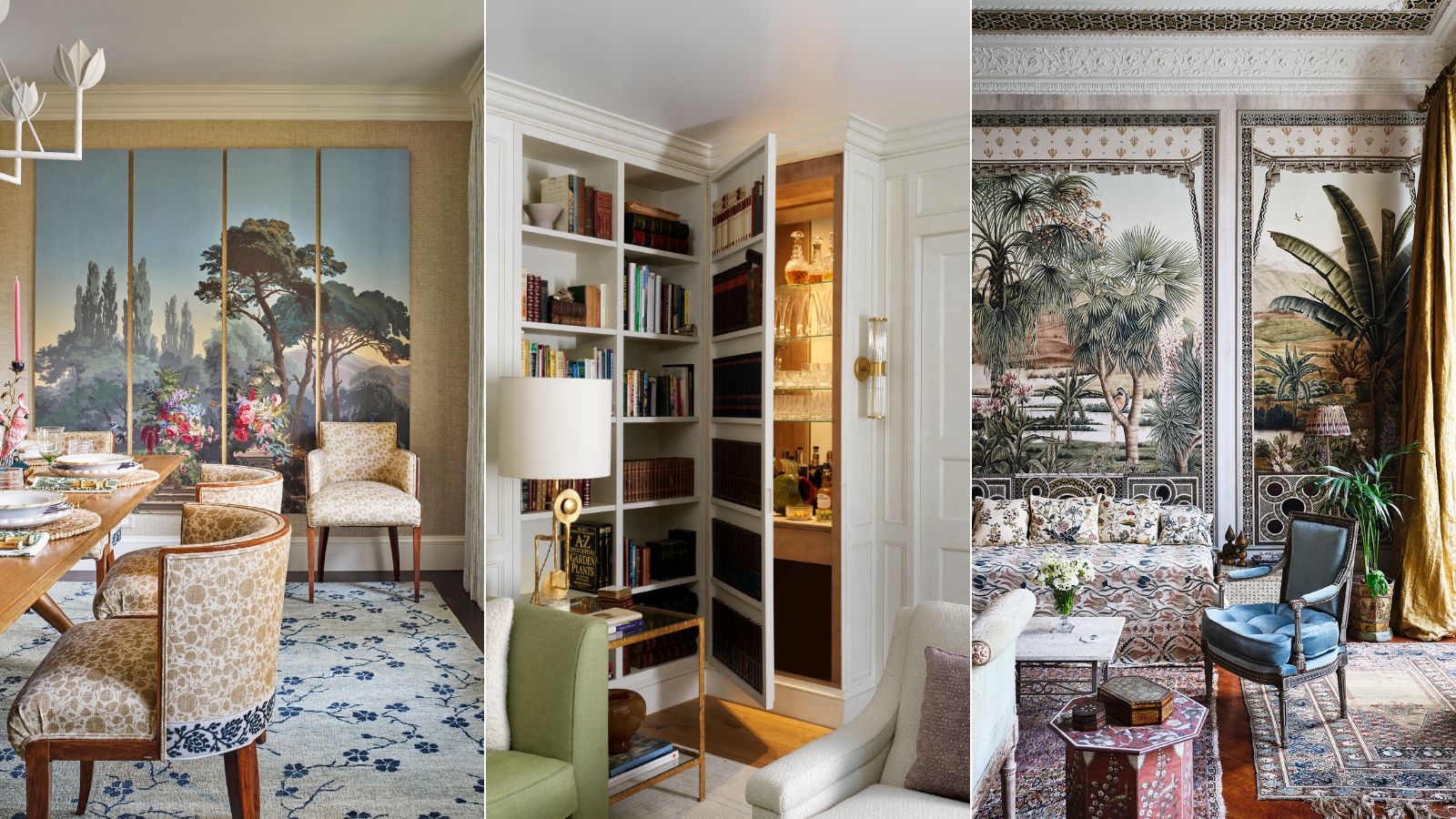
- 1. Create a room with a view with a framed trompe-l'œil landscape mural
- 2. Make a statement in a dining room with a landscape panels
- 3. Evoke the serenity of nature with a hand-painted mural
- 4. Create a tented room
- 5. Disguise a doorway with a trompe-l'œil bookshelf
- 6. Accentuate architecture with a trompe-l'œil trellis wallpaper
- 7. Create the illusion of paneling with paper
- 8. Bring a sense of history with a reproduction tapestry wallpaper

Trompe-l'œil is an artistic technique designed to capture realistic three-dimensional objects or scenes on a two-dimensional surface and, while it has been around for centuries, it’s making a comeback right now.
From hand-painted landscape murals to wallpapers that imitate paneling, marble, and tiles, we’re noticing more and more interior designers embracing trompe-l'œil techniques to create head-turning rooms with whimsy and wow-factor.
If you’re looking to decorate a little differently and bring a new dimension to interior design then you’ll love this interior design trend.
What is trompe l'oeil?
A French phrase that means to ‘deceive the eye’, trompe-l'œil is an artistic treatment used to create the optical illusion of real objects or scenes.
Within architecture and interiors, the technique of painting walls and surfaces to imitate another place or landscape has been done for centuries. In 18th- and 19th-century Europe, when wallpaper production began to take off, trompe-l'œil papers designed to imitate architectural ornament and fine fabrics became popular in bourgeois homes as a way to imbue rooms with grandeur.
Surfaces were often painted or covered with hand-painted papers to mimic more expensive materials and interior decor including tapestry, marble, and paneling. In recent years, as we've become more confident in our decorating, trompe-l'œil has been growing in popularity and we’re noticing it crop up in many interior projects in the form of hand-painted wall murals, panoramic wallpapers with idealized landscapes or architectural friezes.
Today, thanks to developments in photography and printing there is a wide array of digitally printed wallpapers to choose from that depict real scenes or surfaces in minute detail making it even easier to conjure all manner of looks and environments within four walls – the options really are endless.
Design expertise in your inbox – from inspiring decorating ideas and beautiful celebrity homes to practical gardening advice and shopping round-ups.
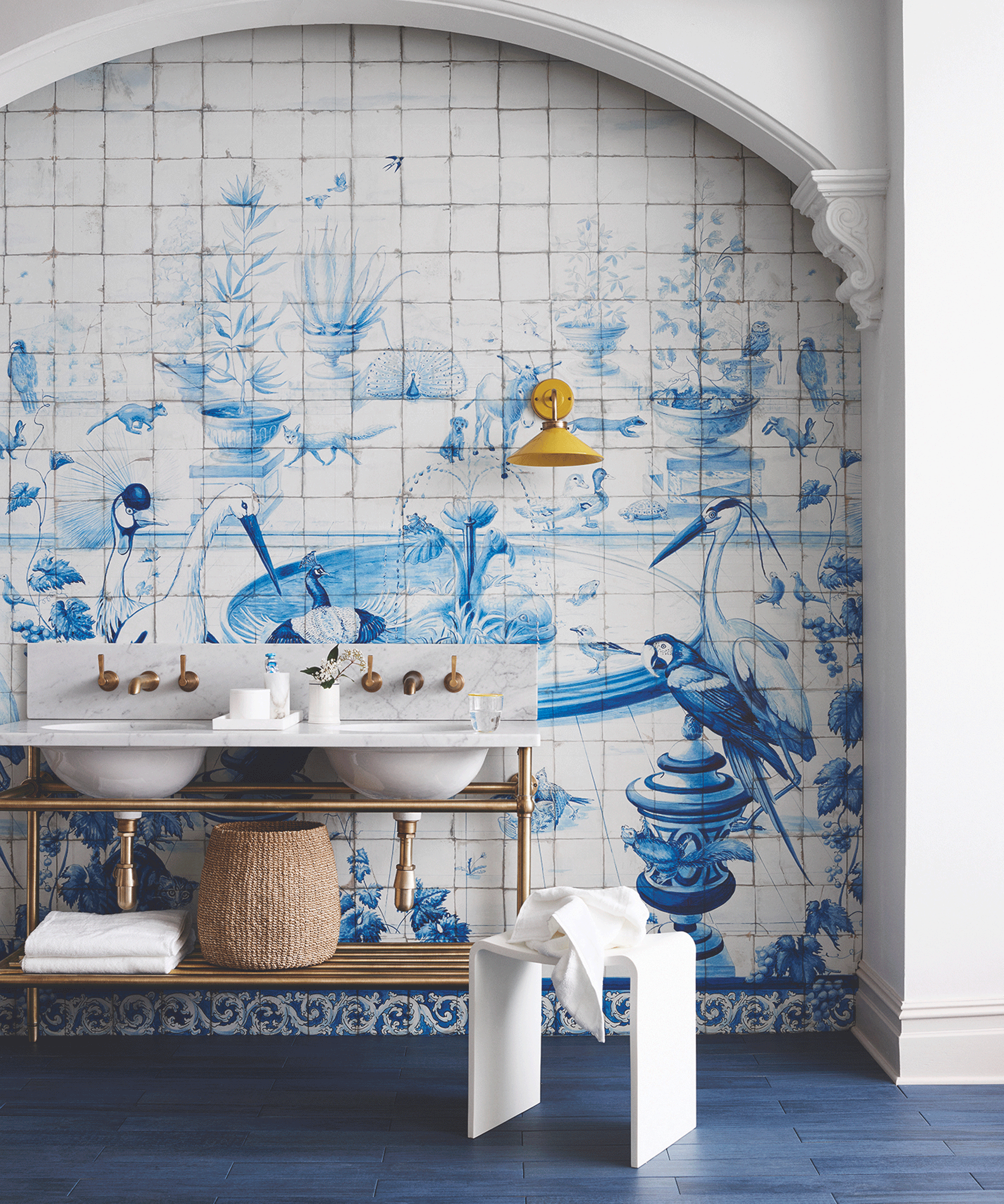
'I often think the appeal of tromp l’œil is in its realism and detail and the way it can bring an authentic atmosphere to your home. Sometimes, a house doesn't have an exciting view, architecture, or even a window, but you can add a striking visual element with the depth, beauty, and detail of trompe-l’œl,' explains decorative artist, Caroline Lizarraga.
Richard Smith, creative director of No.9 Thompson and founder of Madeaux, agrees that the beauty of trompe-l’œl lies in its ability to transport you to another time and place.
‘Trompe-l’œl literally “fools the eye” and is an excellent way to inject a feeling of space into an interior. The clever use of shadows and textures within a trompe-l’œlpainting or wallpaper exaggerates the feeling of being in “another place”. It also adds a touch of whimsy - see the incredible designs of Rex Whistler - always welcome in any room!’
Below we've rounded more expert insights alongside an array of striking trompe-l’œl schemes guaranteed to inspire.
1. Create a room with a view with a framed trompe-l'œil landscape mural
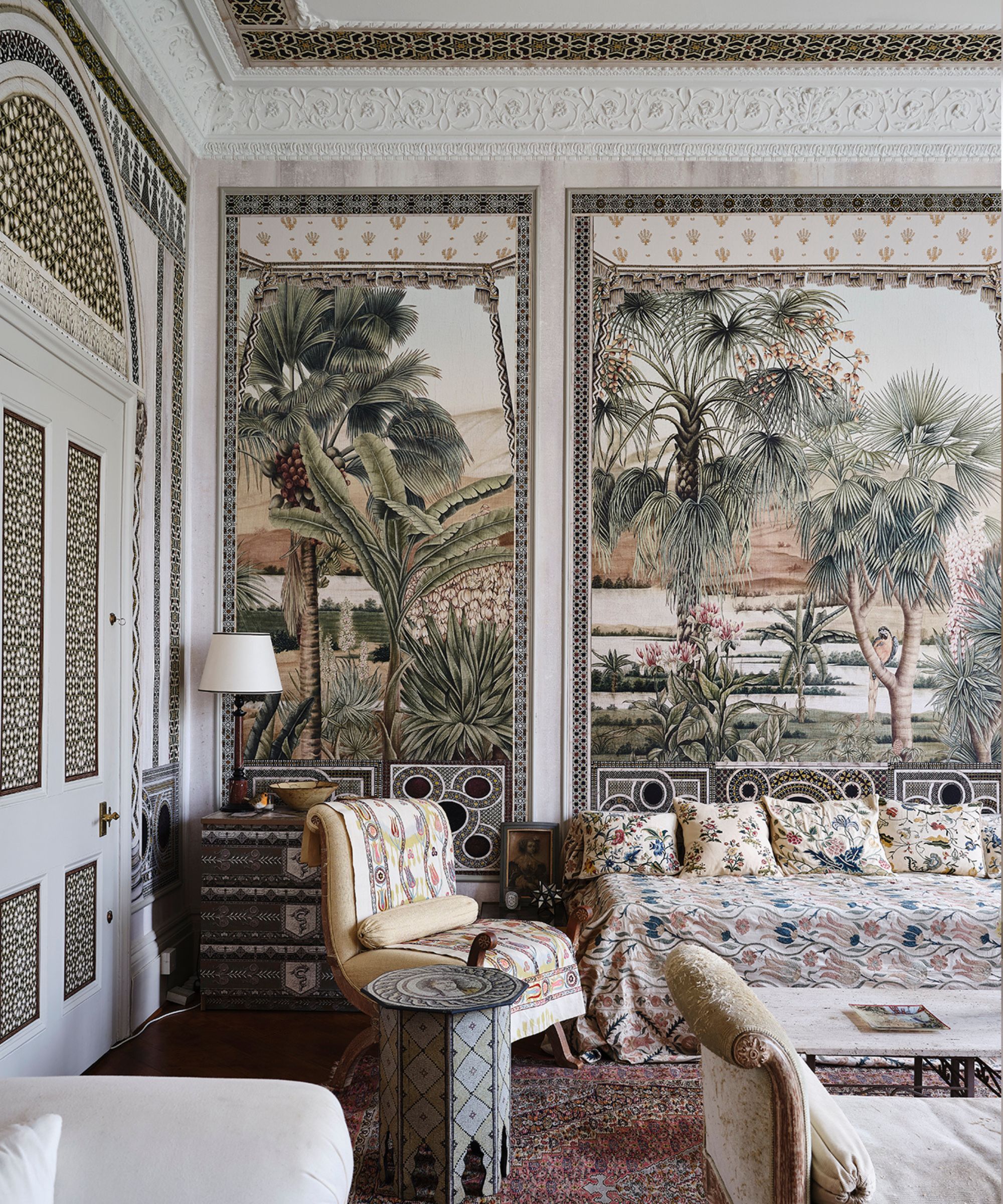
Trompe-l'œil wallpapers that depict the natural world are a wonderful way to bring calm, serenity, and a sense of escapism. Plus, they can also make rooms feel larger. Mehmet and Dimonah Iksel, founders of wallpaper brand Iksel, chose to decorate their Kensington apartment in London with the Iksel D-Dream idealized landscape mural, which, although not a realistic landscape, creates the illusion of looking out onto a tropical scene.
The scene is framed with their Palermo architectural decors which are hand-painted renditions of the original micro marble mosaic borders of Monreale Cathedral in Sicily. Not only does this treatment celebrate the architecture and height of the room, it creates a magical space to relax and escape the busy streets of London while also reflecting the couple's love for travel and architectural history.
‘We chose Palermo in the sitting and connecting dining room, which overlooked Onslow Gardens. Inspired by a trip to Palermo and the Monreale Cathedral, Dimonah created a decor especially for that room, using all the architectural ornaments from Palermo and combining it with one of the first decors she created, D-Dream, a tropical landscape of palms, birds and animals from all over the planet,’ says Mehmet Iksel. ‘The architectural frames opened onto this landscape adding depth in the room. This decor combined cultural heritage that is dear to us; European, Byzantine and Islamic arts.’
The duo believe a magical wallpaper can be a great starting point for an interior scheme. ‘If you chose the theme that makes you happy, in a color you like, everything else follows, in furnishing and fabrics,’ says Mehmet Iksel. ‘Seeking help from a good interior designer who specializes in giving you the best choices in terms of pulling a decor together is usually a good path to a successful room.’
2. Make a statement in a dining room with a landscape panels
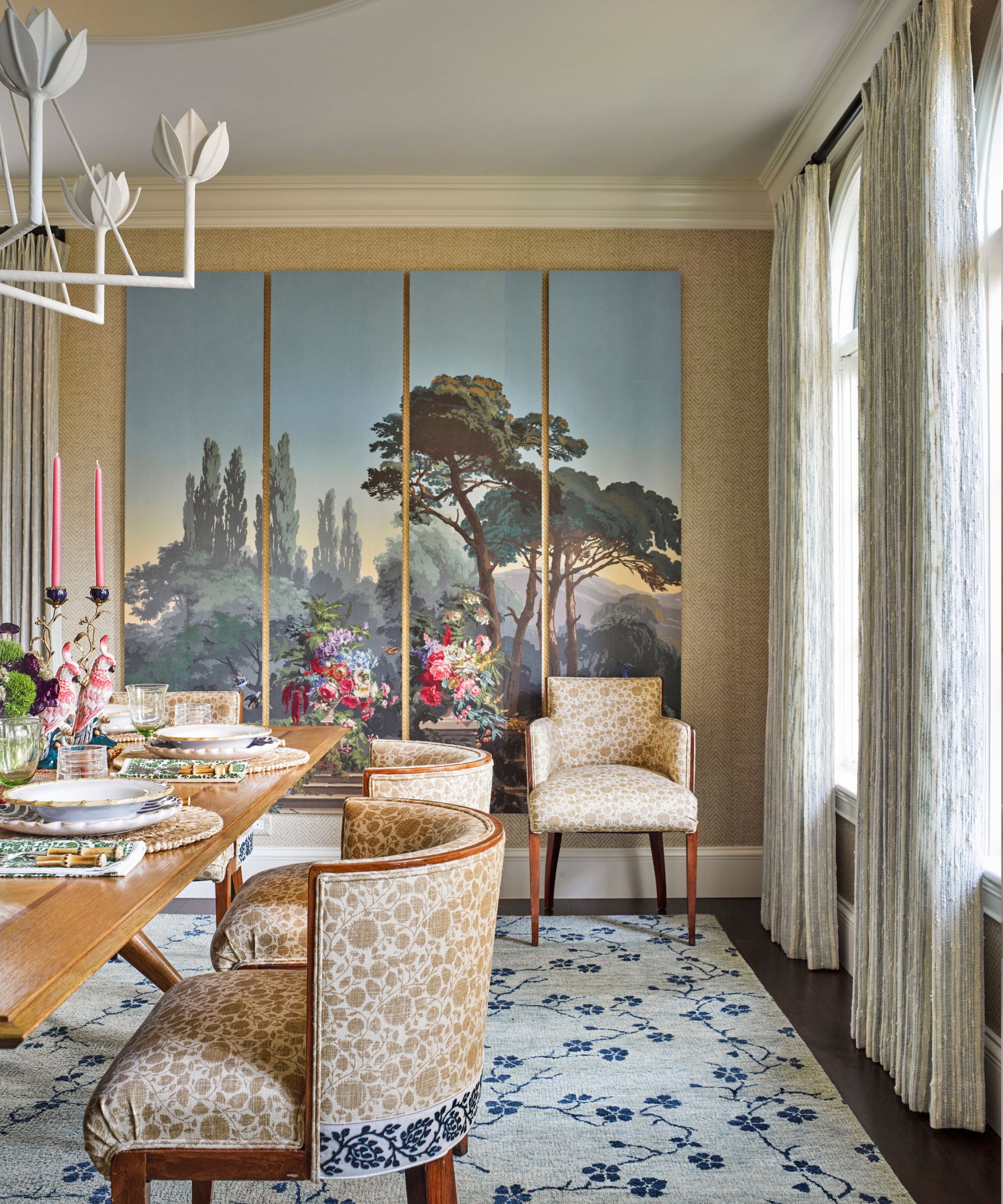
As social spaces that are often not used every day, dining rooms make wonderful spaces to be more daring with decor and introduce conversational wall treatments. A statement accent wall with a trompe-l'œil mural will make special occasions with friends and family even more magical. Here Lousie Copeland installed a Zuber wallpaper to create a beautiful focal point.
'This Zuber wallpaper, with its gorgeous trompe-l'œil landscape, has been a beloved part of the client's family for decades. It started in their South Carolina home, then moved to her daughter's New York City apartment when they sold the house. When her daughter moved again, the client had the wallpaper mounted on six boards (two aren't pictured here). We knew it would be perfect for their new dining room in Palm Beach and designed the whole space around these amazing panels,’ explains Louise Copeland, founder of L.B. Copeland Interiors.
‘Originally, it was in the hallway, but it didn't get the attention it deserved. It fit perfectly on the dining room wall, so creating a room that highlighted its elegance was a no-brainer. Zuber wallpapers can be pretty traditional and heavy, so we mixed in a contemporary table, chandelier, and wallpaper to keep the room feeling light, fresh, and modern.’
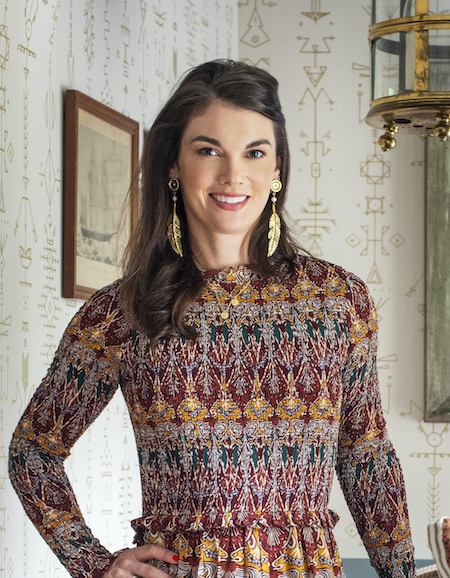
Louise Copeland creates sophisticated and timeless interiors for modern living. Her career began in Jackson, WY, followed by pivotal years in New York City where she collaborated with renowned international fabric and furniture houses. This experience paved the way for a five-year tenure with the esteemed AD100 Designer Steven Gambrel. Louise went on to found her design firm L.B. Copeland Interior Design in San Francisco before relocating to NYC in 2017. Now based in North Carolina, she works on a wide array of residential projects across the US from Greenwich, CT to Miami, FL.
3. Evoke the serenity of nature with a hand-painted mural
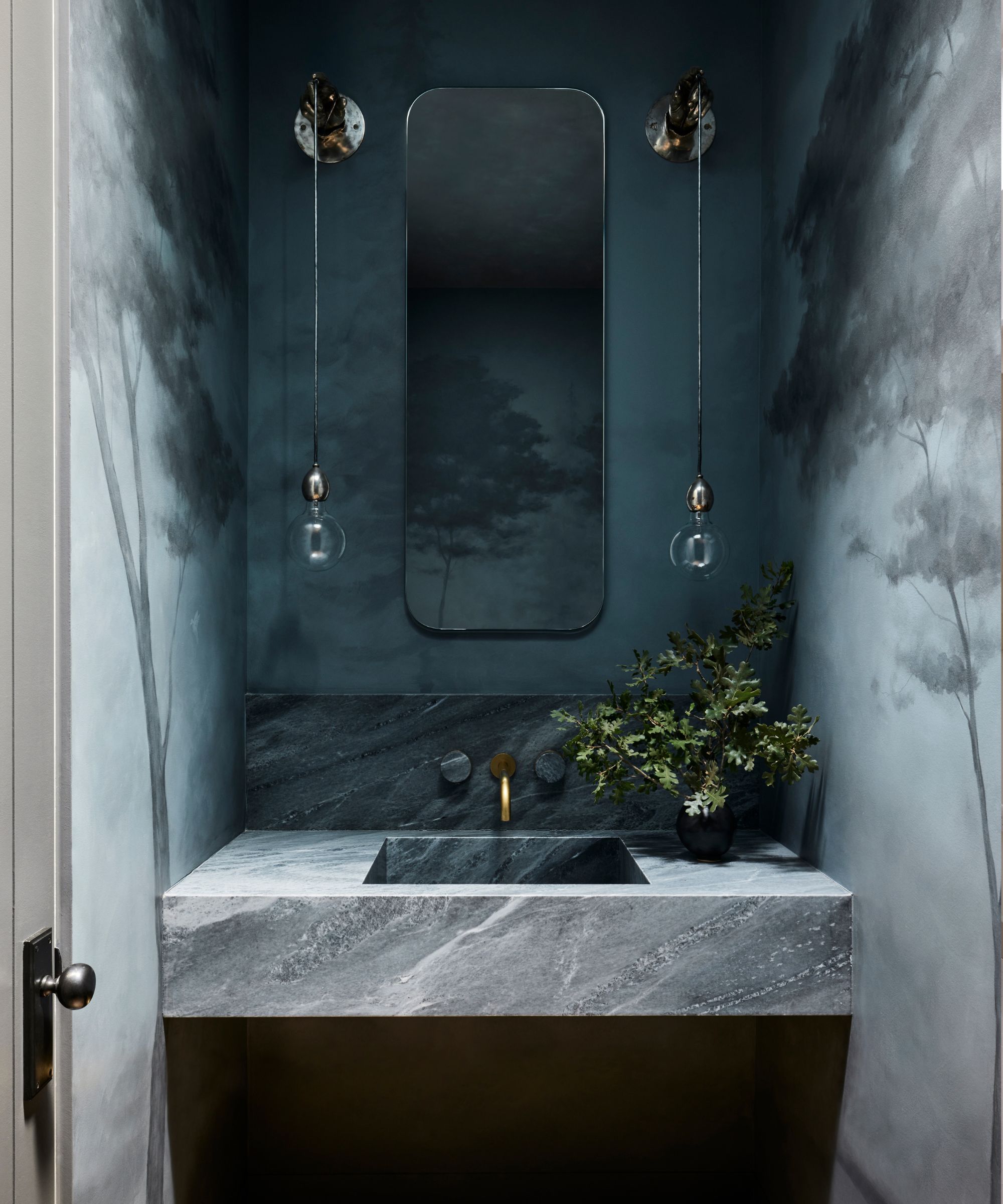
If you’re cautious about decorating with trompe-l'œil, why not start small and try the treatment in a powder room? Small yet impactful, this space features an atmospheric hand-painted mural by San Francisco-based decorative artist Caroline Lizarraga.
‘This property is on a lovely piece of land surrounded by gorgeous trees, so Lindsay asked me to bring the outdoors in and to create a “mood,” hence the deep color and the tromp l’œl tree mural that mimics the quintessential Northern California foggy landscape,’ says Caroline Lizarraga.
‘Often, my clients request unique little elements that represent the family. In this jewel box powder room, Lindsay had us paint little birds that symbolize the children in the house. Trompe l’œl is the perfect medium to capture these kinds of details.’
4. Create a tented room

If you’re looking to add a wow-factor to your living space consider injecting some Mughal magic with the ornate Maharaja tent wallpaper by No.9 Thompson. Hailing from 18th-century Paris, tented rooms are making a comeback with interior designs looking to create intimate, whimsical spaces.
‘I was inspired by the decorative tents shown in Indian miniatures to design two wall panels that can be used together,’ explains Richard Smith, creative director of No.9 Thompson. ‘There is the allover, simpler design and the arched panel design - we combined them in an image to bring focus to specific areas of the room such as the window and the seating area which makes the space a little more intimate and adds an architectural element.’
‘The softer colorways would look very pretty in a bedroom with the arched panel either side of the bed and this rich 'Poppy' colorway would look stunning in a dining room or an intimate sitting room combined with velvet, as in the picture.’
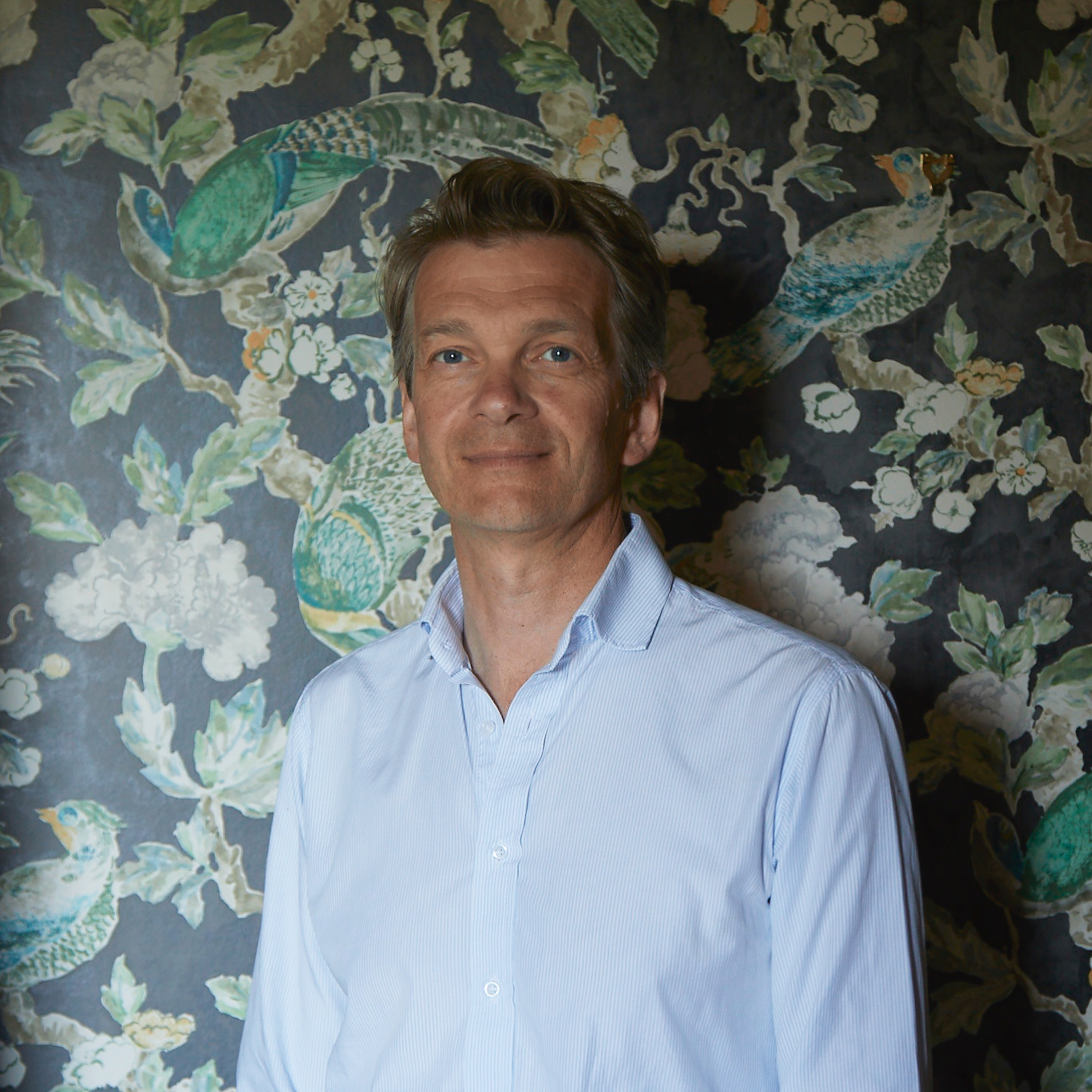
With over thirty years of experience as a designer in the fabric and wallpaper industry, Richard Smith started his career working for a fabric editor before working as a freelance designer producing beguiling designs for a host of renowned fabric houses, from Rubelli to Osborne & Little. Richard created his own fabric house, Madeaux, in 2011, to run concurrently alongside his work designing wallpapers and fabrics for Jim Thompson.
5. Disguise a doorway with a trompe-l'œil bookshelf
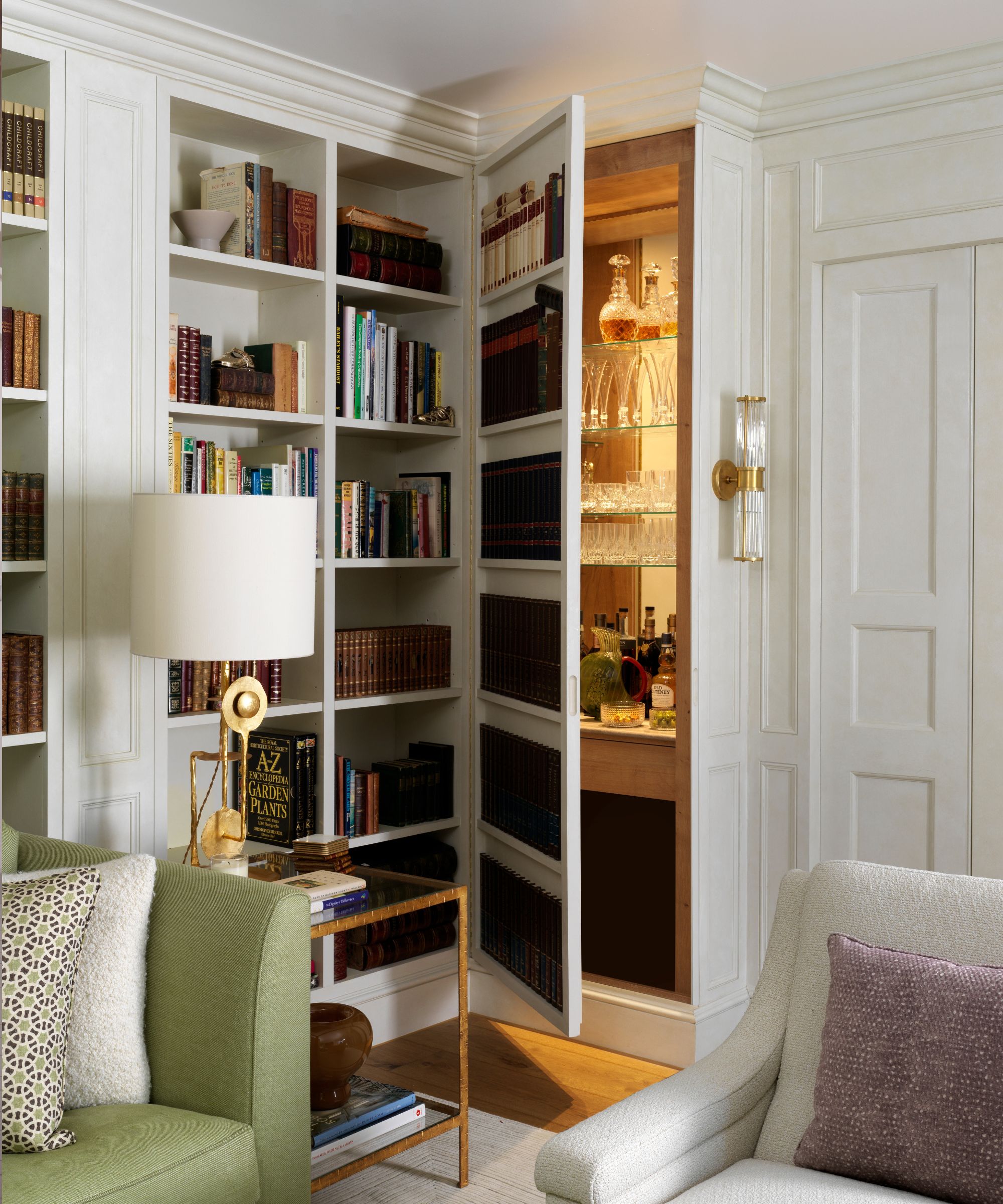
Trompe-l'œil is mainly used for decorative purposes, but it can also be functional, and bring an element of humor and intrigue. In this living room designed by Studio QD, the designers cleverly recreated the scene of a bookshelf on the back of the minibar door to allow it to blend into the room. To ensure a seamless link, rather than use wallpaper or paint, real book spines have been attached to the door to create the optical illusion.
‘In this space we wanted to create flexibility of use, creating a living room that would transition from daytime relaxation to evening socializing with ease. The traditional library bookshelves bring structure, texture and personality to the space, whilst the hidden bar adds an element of the unexpected,’ says Jena Quinn, co-founder of Studio QD. ‘The little details make all the difference, and I love how one of the faux books has been causally placed on top, adding to the playful nature of the design.'
As a studio, we strive to combine structure and whimsy in our schemes, merging American scale and tailoring with English wit, subtle color, and strength. This concealed bar creates that British sense of playfulness and intrigue, making the space more engaging, whilst utilizing the space efficiently and maintaining the traditional symmetry and cohesive flow of the room,’ adds Jena Quinn.
6. Accentuate architecture with a trompe-l'œil trellis wallpaper
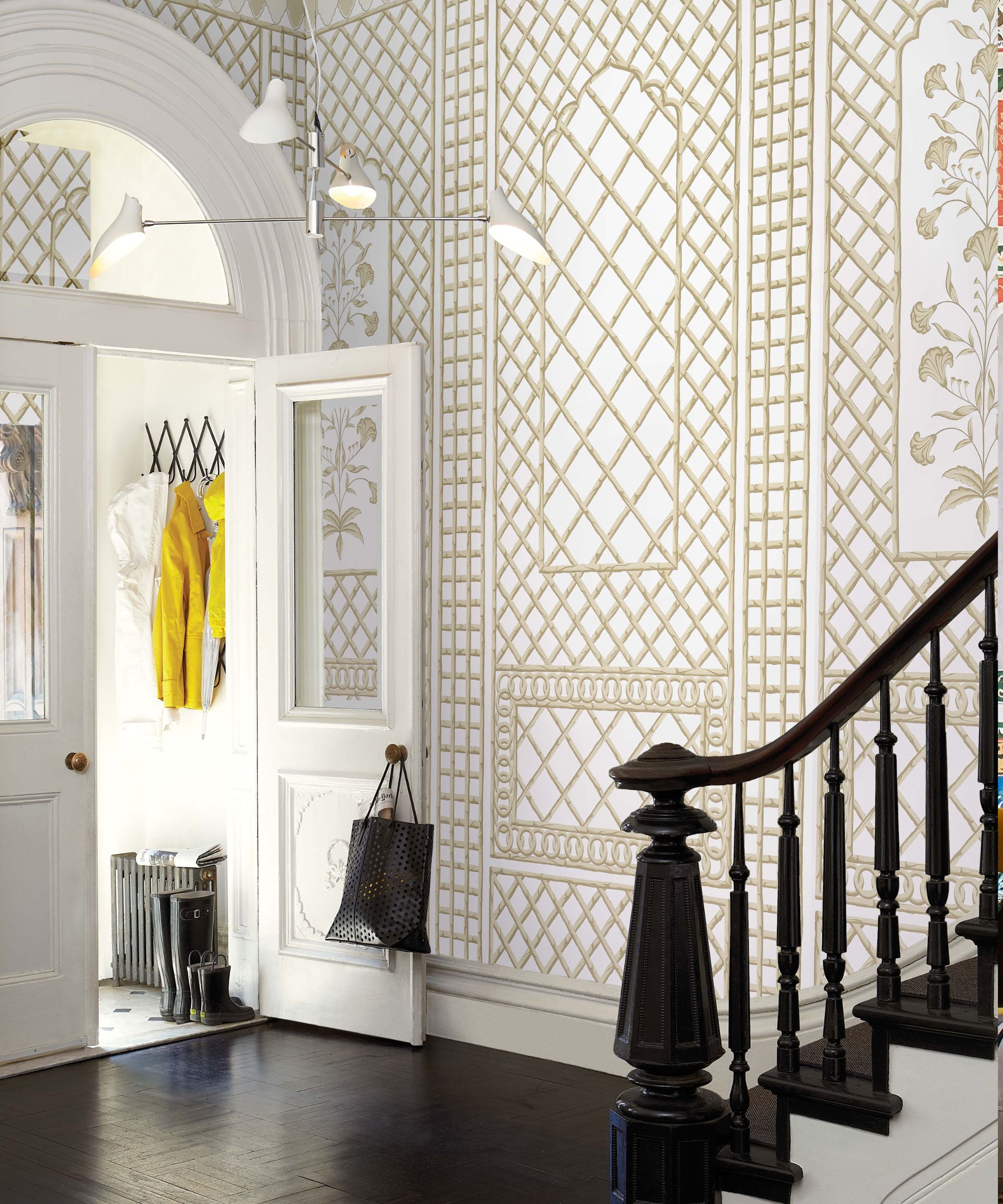
If you’re confronted with large expanses of wall and you're unsure how to make the most of them, then decorating with trompe-l'œil can be a clever way to highlight the architecture of a room.
Featuring a series of trellis panels based on hand-painted artwork by decorative artist Marie-Anne Oudejans, the Bamboo Trellis wallcovering from Schumacher evokes the feeling of a grand Georgian Orangerie. Used floor-to-ceiling in this large hallway, it helps bring definition and structure to the space while also adding drama and depth.
As transient spaces and the first space guests see, hallways are great places to decorate with wallpapers. For more hallway wallpaper inspiration check out our dedicated feature.
7. Create the illusion of paneling with paper
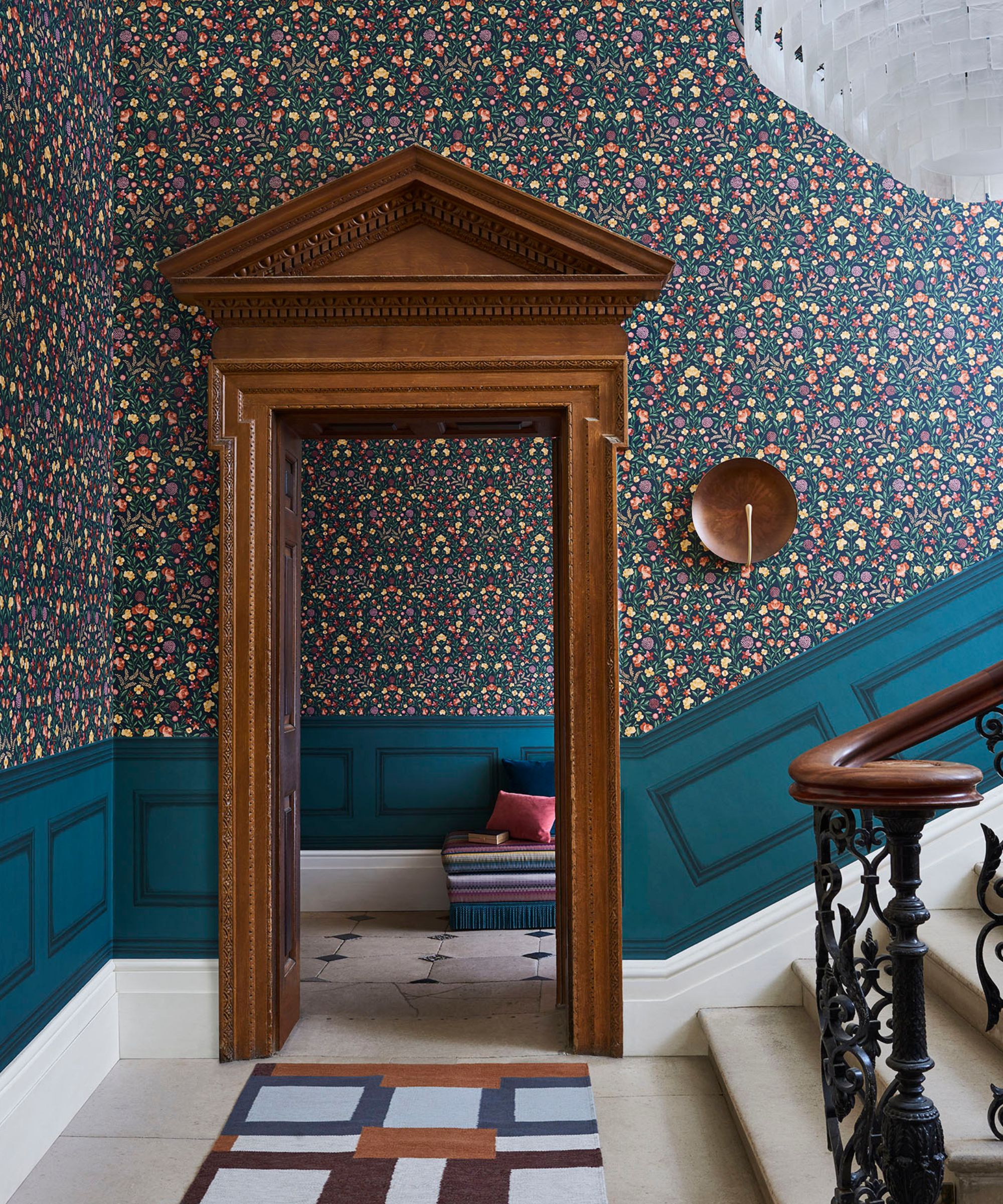
Installing wall paneling is an effective way to bring a feeling of grandeur and history to a property, plus it can also serve as a clever visual device to break up large expanses of wall. However, installing paneling can be costly and disruptive.
Instead, why not create the effect of paneling without the fuss by opting for a panel-style wallpaper? Cole & Son's Library Frieze is the perfect way to bring timeless elegant to a living room or hallway and comes in two captivating shades: Dark Viridian and Midnight.
8. Bring a sense of history with a reproduction tapestry wallpaper

Exquisitely detailed floor-to-ceiling tapestries are a common sight in grand period properties across Europe, depicting scenes which vary from bucolic landscapes to notable battles and mythical tales. Founded with the aim of showcasing the historic beauty of tapestries, British brand Zardi & Zardi specializes in museum-grade reproductions of antique tapestries and offers digitally printed wallhangings and wallpapers of antique specimens complete with their aging and wear for authenticity.
Whether you’re looking to bring an authentic feel to a historic manor house or inject history and texture into a more modern country home, these tapestry wallcoverings are the perfect backdrop and there are plenty to choose from.
Trompe-l'œil is a great 'trick of the eye' device for creating head-turning and impactful spaces. Whether introduced as wallpaper or as a unique hand-painted mural, trompe-l'œil wall and ceiling treatments allow you to conjure infinite atmospheres and scenes within the confines of four walls.
Papers inspired by the natural world are becoming increasingly popular, as we seek spaces to escape and unwind from our busy everyday lives. To bring a sense of adventure try a large-scale jungle mural alternatively, for a calming space, why not paste up a scene of a tranquil seascape? Architectural trompe-l'œil papers are also having a moment from designs that mimic marble and tiles, to paneling and architectural features like columns and friezes. If you have large rooms these are an effective way to define spaces while injecting a sense of grandeur.

Pippa is a contributor to Homes & Gardens. A graduate of Art History and formerly Style Editor at Period Living, she is passionate about architecture, creating decorating content, interior styling and writing about craft and historic homes. She enjoys searching out beautiful images and the latest trends to share with the Homes & Gardens audience. A keen gardener, when she’s not writing, you’ll find her growing flowers on her yard for styling projects.